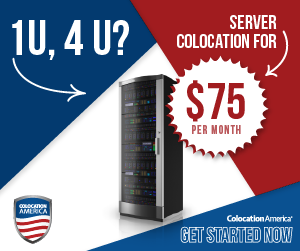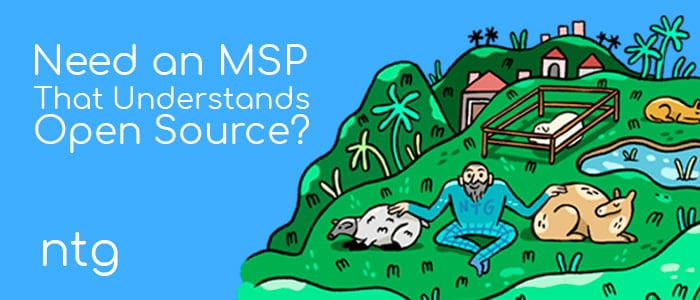Miscellaneous Tech News
-
@scottalanmiller said in Miscellaneous Tech News:
@coliver said in Miscellaneous Tech News:
@scottalanmiller said in Miscellaneous Tech News:
I took one of their seniors, and showed how, because he wasn't monitoring or controlling anything about himself online, that other people were and how, nearly fifteen years ago, I could find a reason to know who he was, where he went to school, what his activities were, who is parents were, his home address, phone, satellite pictures of his house, and a map to his house along with restaurant recommendations nearby... in under thirty seconds.
But you can do all of those things now... with or without someone being online. Nothing is unique to an offline user other then exposure.
Not, but it is easier with an offline user, primary because the user has zero control over what is out there about them and, more importantly, zero knowledge or understanding of it.
Ah it's not that it can be done... just that the person has no knowledge of it. Got it.
-
@coliver said in Miscellaneous Tech News:
@scottalanmiller said in Miscellaneous Tech News:
@coliver said in Miscellaneous Tech News:
@scottalanmiller said in Miscellaneous Tech News:
I took one of their seniors, and showed how, because he wasn't monitoring or controlling anything about himself online, that other people were and how, nearly fifteen years ago, I could find a reason to know who he was, where he went to school, what his activities were, who is parents were, his home address, phone, satellite pictures of his house, and a map to his house along with restaurant recommendations nearby... in under thirty seconds.
But you can do all of those things now... with or without someone being online. Nothing is unique to an offline user other then exposure.
Not, but it is easier with an offline user, primary because the user has zero control over what is out there about them and, more importantly, zero knowledge or understanding of it.
Ah it's not that it can be done... just that the person has no knowledge of it. Got it.
That's the biggest piece, he can never know all of the simple ways that everyone is casually tracking him, or discussing him. He can't know about us talking about him right now, for example.
But beyond that, we don't think about this, but most of us "manage" our online information to quite a degree. If he was in Europe, for example, he would be effectively waiving his right to identity management.
-
how many people, especially the millenials and younger, are so careless about what they do post online? That's probably even worse than having no online presence. How many people lose out on good opportunities in life, because of what their online selves showcase about their lives, good or bad?
It reminds me of the idea of what is worse, bad credit or no credit?
-
@Donahue said in Miscellaneous Tech News:
how many people, especially the millenials and younger, are so careless about what they do post online? That's probably even worse than having no online presence. How many people lose out on good opportunities in life, because of what their online selves showcase about their lives, good or bad?
It reminds me of the idea of what is worse, bad credit or no credit?
No credit is worse than bad credit.
IBM research says that the more you post, the more you control.
-
-
@black3dynamite said in Miscellaneous Tech News:
Linux Deepin 15.8
https://www.omgubuntu.co.uk/2018/11/linux-deepin-15-8-release-improvementsThat look sweet.
-
@DustinB3403 said in Miscellaneous Tech News:
@black3dynamite said in Miscellaneous Tech News:
Linux Deepin 15.8
https://www.omgubuntu.co.uk/2018/11/linux-deepin-15-8-release-improvementsThat look sweet.
They do an awesome job with the visual and the performance is pretty good too.
-
@black3dynamite said in Miscellaneous Tech News:
@DustinB3403 said in Miscellaneous Tech News:
@black3dynamite said in Miscellaneous Tech News:
Linux Deepin 15.8
https://www.omgubuntu.co.uk/2018/11/linux-deepin-15-8-release-improvementsThat look sweet.
They do an awesome job with the visual and the performance is pretty good too.
Is this the Chinese distro or is that something else?
-
@NerdyDad said in Miscellaneous Tech News:
@black3dynamite said in Miscellaneous Tech News:
@DustinB3403 said in Miscellaneous Tech News:
@black3dynamite said in Miscellaneous Tech News:
Linux Deepin 15.8
https://www.omgubuntu.co.uk/2018/11/linux-deepin-15-8-release-improvementsThat look sweet.
They do an awesome job with the visual and the performance is pretty good too.
Is this the Chinese distro or is that something else?
It's a Chinese disto.
-
@black3dynamite said in Miscellaneous Tech News:
Linux Deepin 15.8
https://www.omgubuntu.co.uk/2018/11/linux-deepin-15-8-release-improvementsThat does look nice.
-
-
-
@black3dynamite said in Miscellaneous Tech News:
@matteo-nunziati said in Miscellaneous Tech News:
Wow, Wayland is the default display server.
Fedora 28 base.
-
Software Management
- The YUM package manager is now based on the DNF technology and it provides support for modular content, increased performance, and a well-designed stable API for integration with tooling.
Web servers, databases, dynamic languages
- Python 3.6 is the default Python implementation in RHEL 8; limited support for Python 2.7 is provided. No version of Python is installed by default.
- RHEL 8 provides the following database servers: MariaDB 10.3, MySQL 8.0, PostgreSQL 10, PostgreSQL 9.6, and Redis 4.0.
Desktop
- GNOME Shell has been rebased to version 3.28.
- The Gnome Display Manager uses Wayland as the default display server. The X.Org server, which is the default display server in RHEL 7, is available as well.
Installer and image creation
- The Anaconda installer can utilize LUKS2 disk encryption, and install the system on NVDIMM devices.
- The new Composer tool enables users to create customized system images in a variety of formats, including images prepared for deployment on clouds of various providers. Composer is available as a Technology Preview.
- Installation from a DVD using Hardware Management Console (HMC) and Support Element (SE) on IBM Z.
File systems and storage
- The Stratis local storage manager has been introduced. Stratis enables you to easily perform complex storage tasks and manage your storage stack using a unified interface.
- The LUKS version 2 (LUKS2) format replaces the legacy LUKS (LUKS1) format. The dm-crypt subsystem and the cryptsetup tool now uses LUKS2 as the default format for encrypted volumes.
Security
- System-wide cryptographic policies, which configures the core cryptographic subsystems, covering the TLS, IPSec, SSH, DNSSec, and Kerberos protocols, are applied by default. With the new update-crypto-policies command, the administrator can easily switch between modes: default, legacy, future, and fips.
- Support for smart cards and Hardware Security Modules (HSM) with PKCS #11 is now consistent across the system.
Networking
- The nftables framework replaces iptables in the role of the default network packet filtering facility.
- The firewalld daemon now uses nftables as its default backend.
- Support for IPVLAN virtual network drivers that enable the network connectivity for multiple containers.
Virtualization
- A more modern PCI Express-based machine type (Q35) is now supported and automatically configured in virtual machines created in RHEL 8. This provides a variety of improvements in features and compatibility of virtual devices.
- Virtual machines can now be created and managed using the Cockpit web interface.
- The QEMU emulator introduces the sandboxing feature, which provides configurable limitations to what systems calls QEMU can perform, and thus makes virtual machines more secure.
Compilers and development tools
- The GCC compiler based on version 8.2 brings support for more recent C++ language standard versions, better optimizations, new code hardening techniques, improved warnings, and new hardware features.
- Support for the DWARF5 debugging information format across various tools for code generation, manipulation, and debugging.
- Kernel support for eBPF tracing, used in the SystemTap tool.
- The glibc library based on version 2.28 adds support for Unicode 11.0.0, several improvements in the DNS stub resolver, as well as higher performance.
High availability and clusters
- The Pacemaker cluster resource manager has been upgraded to upstream version 2.0.0, which provides a number of bug fixes and enhancements.
- In RHEL 8, the pcs configuration system fully supports Corosync 3, knet, and node names.
-
@scottalanmiller said in Miscellaneous Tech News:
Software Management
- The YUM package manager is now based on the DNF technology and it provides support for modular content, increased performance, and a well-designed stable API for integration with tooling.
Web servers, databases, dynamic languages
- Python 3.6 is the default Python implementation in RHEL 8; limited support for Python 2.7 is provided. No version of Python is installed by default.
- RHEL 8 provides the following database servers: MariaDB 10.3, MySQL 8.0, PostgreSQL 10, PostgreSQL 9.6, and Redis 4.0.
Desktop
- GNOME Shell has been rebased to version 3.28.
- The Gnome Display Manager uses Wayland as the default display server. The X.Org server, which is the default display server in RHEL 7, is available as well.
Installer and image creation
- The Anaconda installer can utilize LUKS2 disk encryption, and install the system on NVDIMM devices.
- The new Composer tool enables users to create customized system images in a variety of formats, including images prepared for deployment on clouds of various providers. Composer is available as a Technology Preview.
- Installation from a DVD using Hardware Management Console (HMC) and Support Element (SE) on IBM Z.
File systems and storage
- The Stratis local storage manager has been introduced. Stratis enables you to easily perform complex storage tasks and manage your storage stack using a unified interface.
- The LUKS version 2 (LUKS2) format replaces the legacy LUKS (LUKS1) format. The dm-crypt subsystem and the cryptsetup tool now uses LUKS2 as the default format for encrypted volumes.
Security
- System-wide cryptographic policies, which configures the core cryptographic subsystems, covering the TLS, IPSec, SSH, DNSSec, and Kerberos protocols, are applied by default. With the new update-crypto-policies command, the administrator can easily switch between modes: default, legacy, future, and fips.
- Support for smart cards and Hardware Security Modules (HSM) with PKCS #11 is now consistent across the system.
Networking
- The nftables framework replaces iptables in the role of the default network packet filtering facility.
- The firewalld daemon now uses nftables as its default backend.
- Support for IPVLAN virtual network drivers that enable the network connectivity for multiple containers.
Virtualization
- A more modern PCI Express-based machine type (Q35) is now supported and automatically configured in virtual machines created in RHEL 8. This provides a variety of improvements in features and compatibility of virtual devices.
- Virtual machines can now be created and managed using the Cockpit web interface.
- The QEMU emulator introduces the sandboxing feature, which provides configurable limitations to what systems calls QEMU can perform, and thus makes virtual machines more secure.
Compilers and development tools
- The GCC compiler based on version 8.2 brings support for more recent C++ language standard versions, better optimizations, new code hardening techniques, improved warnings, and new hardware features.
- Support for the DWARF5 debugging information format across various tools for code generation, manipulation, and debugging.
- Kernel support for eBPF tracing, used in the SystemTap tool.
- The glibc library based on version 2.28 adds support for Unicode 11.0.0, several improvements in the DNS stub resolver, as well as higher performance.
High availability and clusters
- The Pacemaker cluster resource manager has been upgraded to upstream version 2.0.0, which provides a number of bug fixes and enhancements.
- In RHEL 8, the pcs configuration system fully supports Corosync 3, knet, and node names.
Lots of good stuff. Never upgraded Red Hat before but I’ve done CentOS upgrade, would an upgrade from 7 to 8 be worth it that amount of changes?
-
the upgrade value will depend on what you are using the server for and how long you plan to keep it. RHEL 8 should be better performance and new security and better to manage, but the biggest deal if you already have RHEL 7 in place will be extending your support window.
-
Lots of good stuff and a lot to play with!
-
I read up on the Stratis stuff the other day (somebody posted the link). I wonder if that's available in Fedora 29 or not.
-
@dafyre said in Miscellaneous Tech News:
I read up on the Stratis stuff the other day (somebody posted the link). I wonder if that's available in Fedora 29 or not.
Its talked about on Fedora Wiki website.
https://fedoraproject.org/wiki/Changes/StratisStorage
https://fedoraproject.org/wiki/User:Grover/Draft/testcase_stratis -
Will anyone be using CentOS 8, or will every just keep using Fedora?














